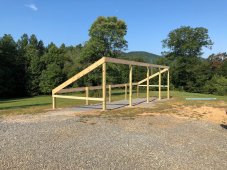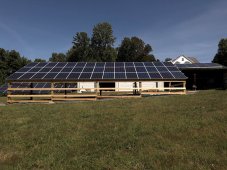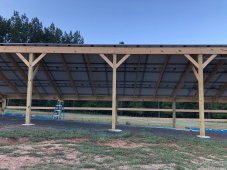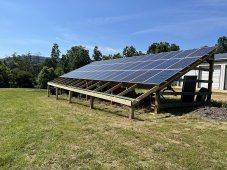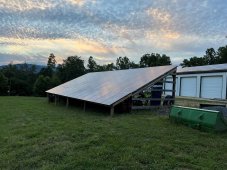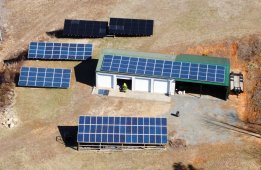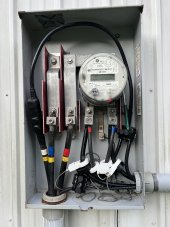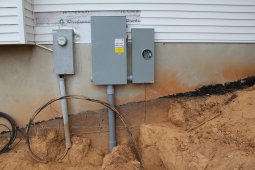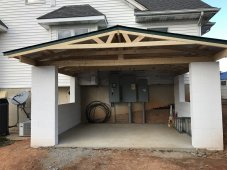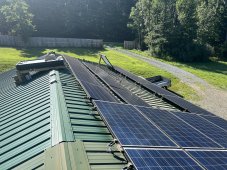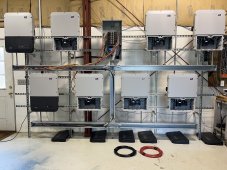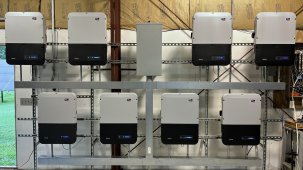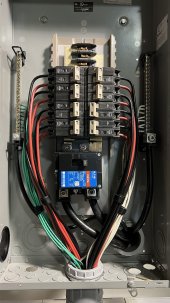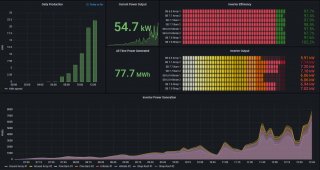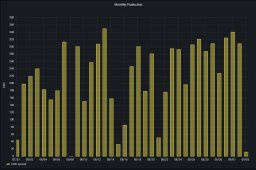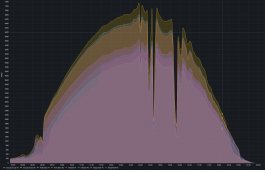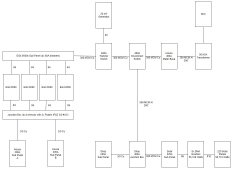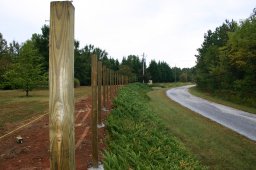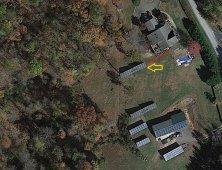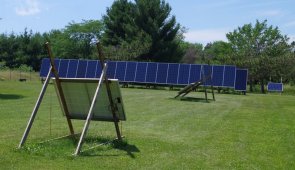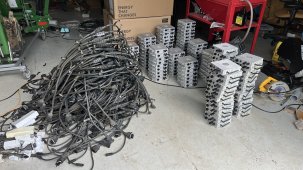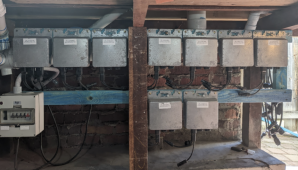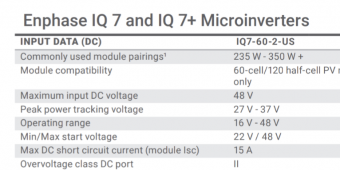I just joined the forum a few days ago, but have been doing solar since fall of 2016. I figured I'd share the journey with you guys.
I started out with 80 panels with micro inverters (Ubiquiti SunMax inverters and panels). 56 of them went on my shop roof and the other 24 on a ground mount array.
Lots of boxes from Ubiquiti:


I made a rig for my tractor to bring each panel up onto the roof:
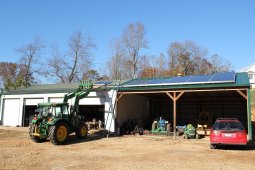
Next up was doing the 24 panel ground array next to the shop building:
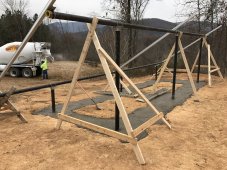
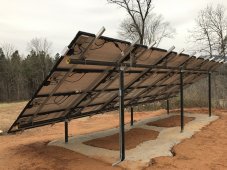
80 panels is good, but why not add 48 more?
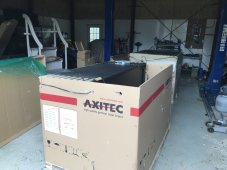
This time I went with 280 watt Axitec panels, but still used SunMax 250W micro inverters. 2 more 24 panel ground mount arrays:

But before bringing them online, I had the POCO come out and upgrade my transformer from a 25 VKA to a 50 KVA:

So at this point I had a total of 128 panels, all using Micro Inverters. Each AC string had between 12 and 14 panels and went to a 20A breaker in a dedicated 200A soler sub-panel:
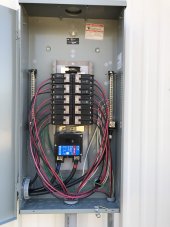
Next I decided to do a 32 panel ground mount array using a SMA SB 7.7. Don't have any construction pics, but here's the completed array:
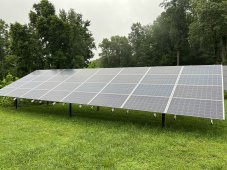
Next I build a pole barn with the roof consisting of 45 panels.
I started out with 80 panels with micro inverters (Ubiquiti SunMax inverters and panels). 56 of them went on my shop roof and the other 24 on a ground mount array.
Lots of boxes from Ubiquiti:


I made a rig for my tractor to bring each panel up onto the roof:

Next up was doing the 24 panel ground array next to the shop building:


80 panels is good, but why not add 48 more?

This time I went with 280 watt Axitec panels, but still used SunMax 250W micro inverters. 2 more 24 panel ground mount arrays:

But before bringing them online, I had the POCO come out and upgrade my transformer from a 25 VKA to a 50 KVA:

So at this point I had a total of 128 panels, all using Micro Inverters. Each AC string had between 12 and 14 panels and went to a 20A breaker in a dedicated 200A soler sub-panel:

Next I decided to do a 32 panel ground mount array using a SMA SB 7.7. Don't have any construction pics, but here's the completed array:

Next I build a pole barn with the roof consisting of 45 panels.



